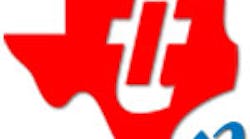After the stock market closed on April 4, Texas Instruments (TI) announced that it was buying National Semiconductor for approximately $6.5 billion. TI also will pay National shareholders $25 in cash for every share of National stock they held. (For the past quarter, National had been trading in a range roughly between $14 and $15 per share.)
By 10 a.m. EST on April 5, the stock market had reacted to the news by not reacting. The Dow was off about seven bucks, NASDAQ was up a couple, and S&P was essentially flat. As mergers and acquisitions go, Wall Street has declared it a non-event.
But that’s just one faraway street. In Sunnyvale, down on Kifer, just north of Lawrence, at National’s HQ site, I imagine there are a lot of happy grins among the folks who’ve been there for a few years—along with a few resumes sent to friends at Maxim and Linear, just in case.
The deal is good for insiders. But what does it mean to National’s customers out in the design community?
For one thing, I’d expect the National brand to disappear. You don’t see Burr-Brown (BB) around any more, do you? Back in 2000, BB and its intellectual assets were folded smoothly into TI with no disruption to its customers that I am aware of. (By the way, for a sense of scale, the Burr-Brown deal was for $7.6 billion, but that was pre-crash.)
On the other hand, I expect the existing National product lines, which are quite robust, thank you, to live on. In an M&A call yesterday, TI’s Rich Templeton said that TI would continue to operate National’s fabs, no product lines would be shut down, there would be no part number changes, and, most importantly, customers would see no need for requalification.
“Our combined sales team of more than 2500 will be 10 times larger than National’s current sales force, which means more customer-facing support to help you solve more problems,” Templeton also said. That gets a little interesting.
One of National’s strongest assets is its WEBENCH online design tools, which can be viewed as an army of virtual field application engineers (FAEs). TI has online design tools, but none that I’ve seen are as targeted as, to pick one example, the WEBENCH tool for FAEs that’s customized for particular kinds of industrial control sensors—not only generic Wheatstone bridges, but even for specific types of toxic gas sensors. It will be interesting to see how TI integrates WEBENCH with its already strong FAE team.
I believe this merger is more a case of constructive consolidation than of deconstructive paring away of deadwood. The recession of the last several years has already seen to that—just ask Bob Pease. (Not that Bob was deadwood, but he was certainly severely pared, indicating that National has already cut deeply and painfully.)
More analytically, IHS iSuppli opined that the acquisition would bolster TI’s existing lead in the market for voltage regulators, noting TI’s existing 18.1% market share, comparing it to National’s 15.2%. Across the entire analog/power spectrum, IHS iSuppli noted that TI already has a 13.7% share of the global market and National would boost that a little to 16.8%. Overall, in the semiconductor business, the new TI bumps Toshiba down to fourth place, taking over third place behind number two Samsung and number one Intel.
That leaves only the skunk works aspect of the merger for us to consider. Of course, I can only speculate about what’s going on in the lab. On the TI side, at ISSCC, I saw (and blogged about) an upcoming (in two years or so) TI DSP built on a 28-nm process technology. But that’s no longer exactly a skunk works project if TI is bragging about it at ISSCC. And at National a couple of years or so ago, I saw an amazing analog-to-digital converter (ADC) that I probably shouldn’t have seen.
I suppose there must be some advanced project work that has been duplicated at both TI and National, and there will probably be some tears and disappointment as those are reconciled, but I hope there won’t be too much of that.
In the meantime, here’s a toast to the guys from Sperry and Fairchild who started National; to Charlie Sporck and Bob Widlar, who are no longer with us; and to Bob Swanson and Robert Dobkin, who are with us, but are no longer at National. May they stand in for all the engineers who earned their wings there and moved on. And here’s a toast to all the lower-profile women and men who labored under Sporck and Gil Amelio and Brian Halla and Don Macleod through the decades. I hope you hung on to your options.
